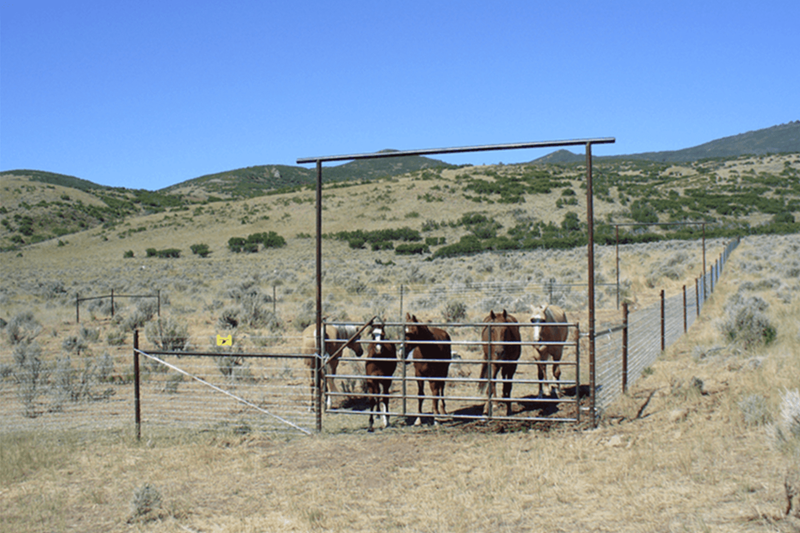 Picture your ideal farmland – rolling fields, livestock grazing, and a sturdy fence protecting it all. But what if that fence isn’t as solid as you think? Small mistakes can lead to sagging gates, escaping animals, and even safety hazards. Want to make sure your farm is secure and efficient? Understanding common fencing pitfalls is the first step. From wobbly posts to power problems, there are several areas where things can go wrong. Let’s learn about these potential issues and learn how to create a fence that truly stands the test of time, including strong metal farm gates.
Picture your ideal farmland – rolling fields, livestock grazing, and a sturdy fence protecting it all. But what if that fence isn’t as solid as you think? Small mistakes can lead to sagging gates, escaping animals, and even safety hazards. Want to make sure your farm is secure and efficient? Understanding common fencing pitfalls is the first step. From wobbly posts to power problems, there are several areas where things can go wrong. Let’s learn about these potential issues and learn how to create a fence that truly stands the test of time, including strong metal farm gates.
Insufficient Corner Post Sizing
One of the most frequent problems with many types of fences, including those around farms, is that corner posts are too small or not set deep enough. This is especially an issue with sandy or loose soils.
The strength of the fence should determine the post diameter. Smaller fences with one or two wires might only need a 4 or 5-inch diameter post. A larger fence, often made of 5 or 6 strands of barbed or high-tensile wire, will need a 6 or 7-inch diameter post. Those utilizing net wire should have the strength of an 8-inch diameter post.
To improve stability, consider a 10-foot corner brace. A “floating diagonal” brace is a good option. Here, a 4-inch by 10-foot post is used, notched halfway into the corner post. It extends to the ground in the opposite direction of the corner post.
With electric fences, it’s important to avoid metal bracing. Metal conducts electricity and could interfere with the fence’s effectiveness.
Inadequate Spacing Between Posts
Traditional barbed wire fences often positioned posts quite close together (roughly every 16 feet). However, modern electric fences can work effectively with much wider spacing.
For electric fences, consider spacing posts 80-100 feet apart. If using this wider spacing, shorter posts called “stays” can be used between the main posts to support the wires. Some experts suggest slightly closer spacing for electric fences, around 50-70 feet between posts.
Choosing the Right Energizer for Your Metal Farm Gates
Electric fences need the right energizer to be effective. A good starting point is to aim for 1 joule of output per mile of fence. So, a six-mile fence would need a minimum 6-joule energizer.
Experts recommend using a low-impedance energizer with a low-amp fuse for longer-lasting power. Larger energizers can power through vegetation and short out more easily. Look for energizers that operate under 8,000 volts for optimal performance.
Grounding Your Electric Fence for Metal Farm Gates – Tips & Tricks
Proper grounding is absolutely essential for electric fences to work as intended. A good general rule? Three feet of ground rod per joule of your energizer output. For example, a 6-joule energizer would need approximately 18 feet of ground rods. Typically, this means three 6-foot rods.
Spacing is key! Ground rods basically act as antennas, pulling electrons back to the energizer to complete the circuit. Ideally, space your rods at least 10 feet apart to get the most out of them. Those in drier areas should consider spreading ground rods along the fence line to improve grounding where rainfall may be inadequate.
Galvanized rods are the optimal choice for grounding, and most energizers use insulated galvanized lead-out wires. Sticking entirely with galvanized components (rods, wire, and connections using a 12.5-gauge wire) will help prevent corrosion and ensure your metal farm gate’s electric fence system remains powerful and reliable for years.
Wildlife Considerations for Your Metal Farm Gates
Rather than attempting to completely block wildlife like elk and moose, consider designing a more flexible electric fence. This means using posts that can bend slightly without breaking, allowing animals to pass through with minimal damage.
Additionally, building a lower fence with the top wire around 30 inches high can help animals navigate it more easily. Antelope can easily pass under, and while elk will make contact, they’ll hit it with their legs rather than their heavy bodies, reducing the chance of injury or fence damage. This can make your strong metal farm gates more wildlife-friendly.
Powering Up Your Metal Farm Gates – Tips for Gate Openings
To make gate openings functional in electric fence systems, think underground! Use a floating diagonal brace on both sides of the gate for stability. Then, bury both insulated hot wires and cold, galvanized wires a foot deep under the gate opening. This keeps your fence powered even when the metal farm gate is open.
Need Durable Metal Farm Gates? International Pipe Has Your Solution
If you’re frustrated with flimsy fencing, International Pipe offers the answer. Our metal farm gates are crafted with precision and strength, ensuring your livestock stays secure, and your property looks its best. Contact us today to discuss your fencing needs. Let’s build a solution that provides both lasting protection and peace of mind.
